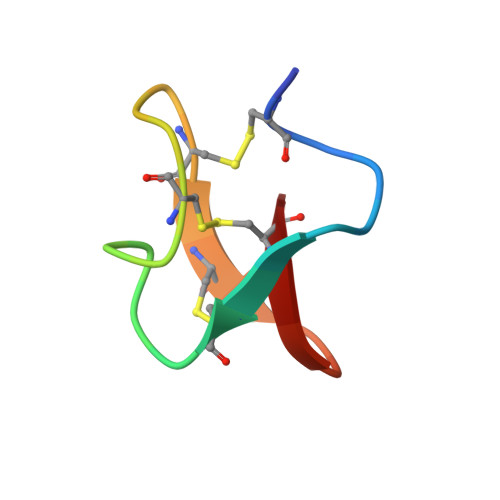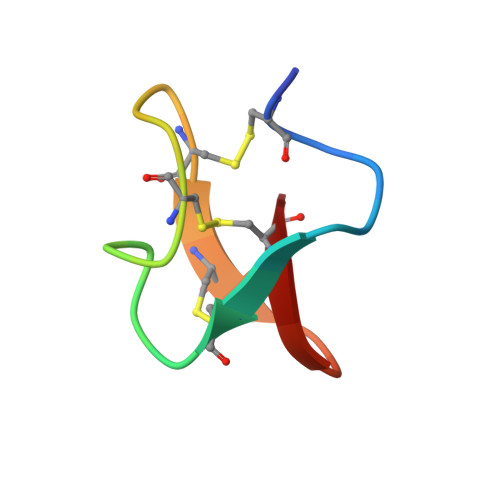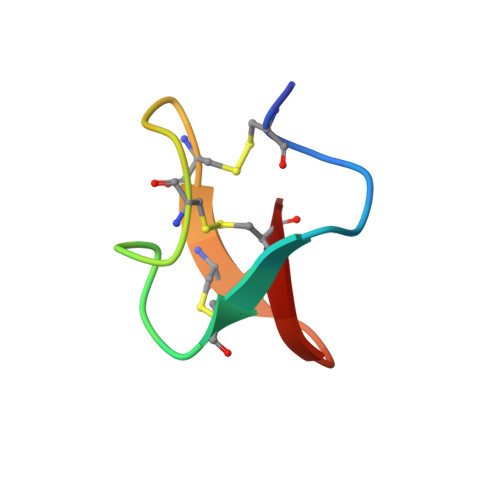Use of restrained molecular dynamics in water to determine three-dimensional protein structure: prediction of the three-dimensional structure of Ecballium elaterium trypsin inhibitor II.
Chiche, L., Gaboriaud, C., Heitz, A., Mornon, J.P., Castro, B., Kollman, P.A.(1989) Proteins 6: 405-417
- PubMed: 2622910
- DOI: https://doi.org/10.1002/prot.340060407
- Primary Citation of Related Structures:
2ETI - PubMed Abstract:
Refinement of distance geometry (DG) structures of EETI-II (Heitz et al.: Biochemistry 28:2392-2398, 1989), a member of the squash family trypsin inhibitor, have been carried out by restrained molecular dynamics (RMD) in water. The resulting models show better side chain apolar/polar surface ratio and estimated solvation free energy than structures refined "in vacuo." The consistent lower values of residual NMR constraint violations, apolar/polar surface ratio, and solvation free energy for one of these refined structures allowed prediction of the 3D folding and disulfide connectivity of EETI-II. Except for the few first residues for which no NMR constraints were available, this computer model fully agreed with X-ray structures of CMTI-I (Bode et al.: FEBS Lett. 242:285-292, 1989) and EETI-II complexed with trypsin that appeared after the RMD simulation was completed. Restrained molecular dynamics in water is thus proved to be highly valuable for refinement of DG structures. Also, the successful use of apolar/polar surface ratio and of solvation free energy reinforce the analysis of Novotny et al. (Proteins 4:19-30, 1988) and shows that these criteria are useful indicators of correct versus misfolded models.
Organizational Affiliation:
Department of Pharmaceutical Chemistry, University of California San Francisco 94143-0446.















